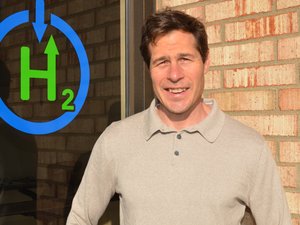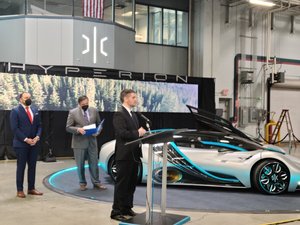
A startup licensing Ohio State University technology that aims to find plentiful hydrogen in deep underground rocks – and extract it without creating more greenhouse gases – has emerged from stealth mode.
Koloma Inc. licenses intellectual property developed by its CTO, Tom Darrah, a tenured professor of earth sciences who discovered methods to find the subsurface deposits of geologic hydrogen, and access and produce the gas. University representatives were not immediately available.
"Our production methods source hydrogen in a clean, continuous and cost-effective manner, eliminating the barriers that have historically hindered widespread adoption," said a statement on the company's website, which updated from an earlier placeholder page on Wednesday.
"We are actively engaged in exploration and are appraising assets that will play a significant role in U.S. decarbonization efforts," it said. "As the rapidly emerging geologic hydrogen industry takes shape, Koloma’s data-driven approach will power the discovery of geologic hydrogen resources around the world."
Although Koloma was incorporated in Dublin, where it has an office, and the startup has a Columbus laboratory, the headquarters has moved to Denver.
Executives were not available for interviews. A report Wednesday in Forbes said Koloma's first exploratory wells are in the Midwest.
One of Columbus Inno's Startups to Watch for 2023, Koloma since last August raised $91 million over two rounds, according to regulatory filings.
Listed investors on the website include Breakthrough Energy Ventures (chaired by Microsoft mogul Bill Gates), Energy Impact Partners, Prelude Ventures, Evok Innovations and Piva Capital. All of the funds focus on renewable energy and sustainability.
Besides partners from Breakthrough and Energy Impact, the board is packed with veterans of the energy industry, in operations, engineering and exploring.
Darrah now is working full-time with the startup, "overseeing natural hydrogen exploration and intellectual property and technology development," according to his bio on the company website, which refers to his professorship in the past tense. OSU officials were not immediately available to clarify his status; his faculty page is still active.
In 10 years at Ohio State, Darrah won research grants from the likes of the National Science Foundation, U.S. Departments of Defense and Energy, National Institute of Environmental Health and NASA.
In May, Ohio State named Darrah 2023 Innovator of the Year, according to a release, an award for "established Ohio State researchers who are actively working to promote commercialization of university intellectual property."
CEO Pete Johnson previously was co-founder, president and CTO at Monolith Materials in Nebraska, the largest plant in the world producing hydrogen with a method called methane pyrolysis that produces almost no emissions. He also had investment and development roles in other renewable energy companies and was an adviser to the Energy Department.
COO Carrie Hudak, a geologist, has had management positions at petroleum and energy companies.
Hydrogen is sought as a renewable fuel because burning it produces only water as an emission. However, most processes to make it take enormous amounts of energy, and some methods also consume water.
Meanwhile, deep in the Earth's mantle, seeping groundwater interacting with certain iron-rich rocks are continuously producing hydrogen, especially along the edges of tectonic plates. The natural process is estimated to produce enough for 30% of annual demand for hydrogen, according to the Koloma website.
Trouble is, many think those stores are too deep and too expensive to reach, according to a post this spring by the U.S. Geological Survey. And when hydrogen naturally bubbles up to the surface, the lightest element quickly escapes the atmosphere.
Without going into too much detail publicly on the methods, Koloma said it has the resources and tech to rapidly grow the scale of its hydrogen exploration.
Extracting geologic hydrogen produces almost no carbon dioxide and requires almost no inputs of electricity or water, according to charts on its website.
The only comparable process is electrolysis (splitting water into hydrogen and oxygen) when it's powered by renewable energy – but compared to the many acres for solar and onshore wind farms, a typical geologic hydrogen well site would measure 0.3 acre.
Central Ohio is home to other companies betting on hydrogen's future: California-based Hyperion Co. plans to invest $297 million and employ 700 at a hydrogen fuel cell manufacturing plant on the city’s southwest side.
Honda Motor Co. will produce a new CR-V-based hydrogen fuel cell electric vehicle in Marysville. Columbus fuel cell startup Power to Hydrogen LLC is working up to commercial scale production of its sustainable hydrolysis method for producing hydrogen.








